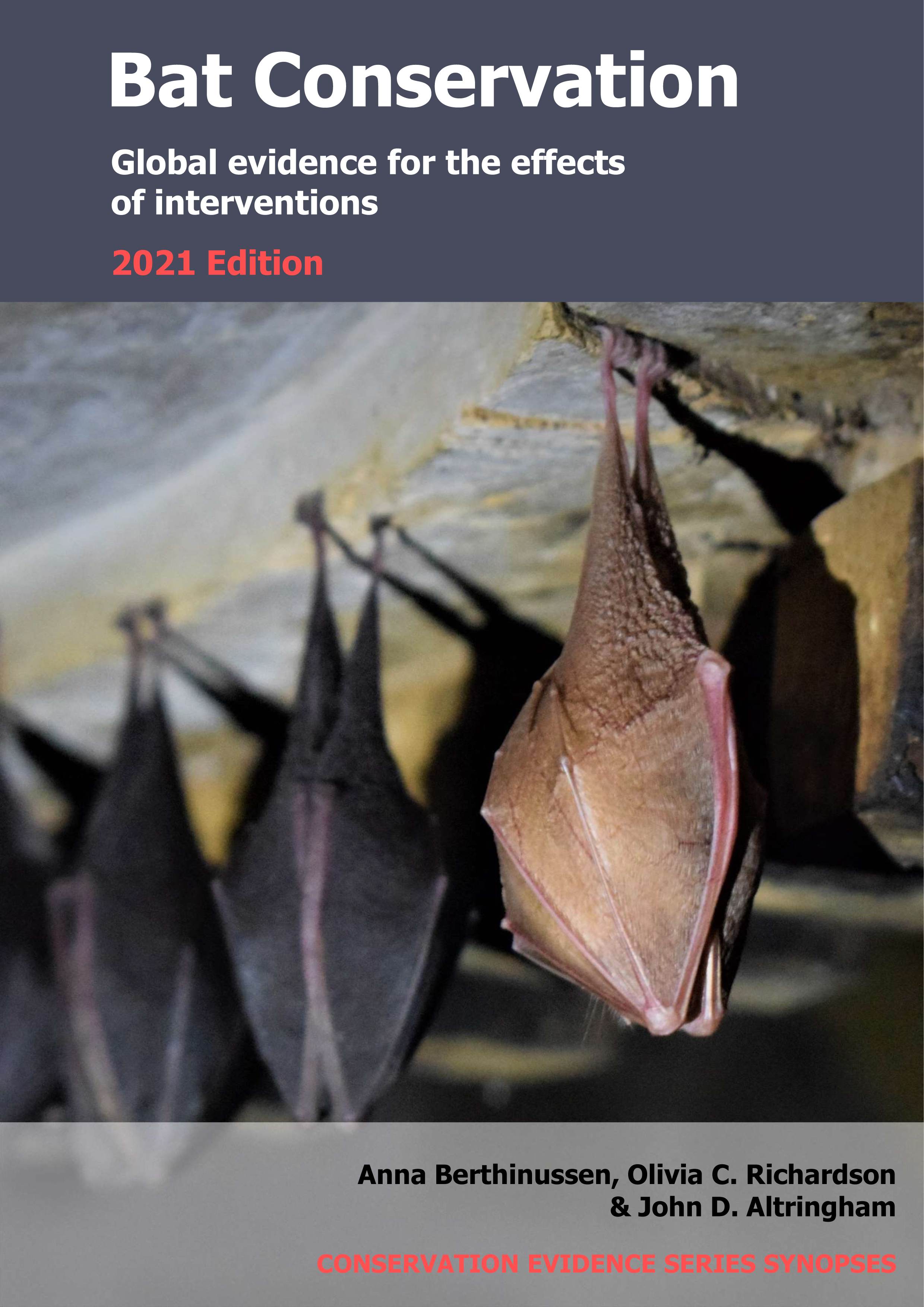Translocate bats
-
Overall effectiveness category Likely to be ineffective or harmful
-
Number of studies: 2
View assessment score
Hide assessment score
How is the evidence assessed?
-
Effectiveness
5% -
Certainty
40% -
Harms
80%
Study locations
Supporting evidence from individual studies
A study in 2005 on Kapiti Island, New Zealand (Ruffel & Parsons 2009) found that nine of 20 translocated lesser short-tailed bats Mystacina tuberculata were recorded at the release site 232 days after release, and all were in poor condition. After eight months, captured bats were balding and had damaged infected ears and were subsequently returned to captivity. Four male and 16 female captive bred juveniles were released on the Island in April 2005 and provided with roosts and supplementary food (consistently for 55 days after release and irregularly for 156 days after release). Kapiti Island is a 1,965-ha nature reserve of forest and scrub located 40 km south west of the source bat population on mainland New Zealand. Bats were monitored using infrared video cameras and caught in harp traps during three study periods after release in 2005 (eight weeks in April–June, five weeks in August–September, one week in November–December).
Study and other actions testedA study in 2006–2008 of four sites in alpine villages in Switzerland (Weinberger et al 2009) found that two of 11 greater horseshoe bats Rhinolophus ferrumequinum and none of seven lesser horseshoe bats Rhinolophus hipposideros remained at release sites in the long term after translocation, 10 bats homed after release and four died with three days of release. Two greater horseshoe bats (one male, one female) translocated 149 km settled in the release area and the female was regularly observed in a new roost in 2007 and 2008, but had an unsuccessful pregnancy in 2007. Two female lesser horseshoe bats remained at release sites 54–57 km away during 10 days of radio-tracking, but were not recorded beyond this period. Eight greater horseshoe bats and two lesser horseshoe bats homed after release at sites <20 km from their original roosts. One greater horseshoe bat and three lesser horseshoe bats died of shock or predation within three days of release. Male and female greater horseshoe bats (11) and lesser horseshoe bats (7) of three age classes (adult, 1–2 years and yearlings) were captured from large colonies and translocated to small relict colonies in similar habitats 11–149 km away in May–August 2006. Released bats were monitored with infrared video and radio-tracked for up to 10 days after release. Roosts at release sites were regularly checked in 2007 and 2008.
Study and other actions tested
Where has this evidence come from?
List of journals searched by synopsis
All the journals searched for all synopses
This Action forms part of the Action Synopsis:
Bat Conservation
Bat Conservation - Published 2021
Update 2020





)_2023.JPG)














